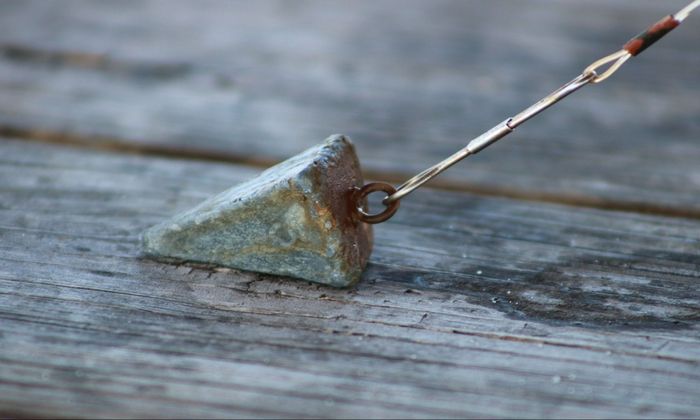Ways to Add Weight To Your Hooks
Here are five of the best weight lures every fisherman should have.

Many anglers who fish in deep waters like out in the sea, or big lakes and reservoirs go bottom fishing. This is especially true for sunny days where fish tend to hide from the heat, either through staying underneath shade or swimming deeper into the water. Bottom fishing has anglers casting bait to the bottom of the surface or, in the case of the ocean, as deep as the line will allow it. It is a versatile yet straightforward technique that targets much fish. The method can also be used in different habitats like reefs, wrecks, and buoys. In a sense, anglers can do bottom fishing anywhere from nearshore, offshore, and freshwater fishing. It can also be done while anchored, drifting, or with a trolling motor.
Though bottom fishing can be tackled differently, all of it boils down to how an angler uses the weight for their hooks. Commonly known as sinkers, these attachable weights keep lines and hooks in place while deep underwater. They come in various shapes, sizes, and weights, corresponding to different water currents, weather conditions, and bottom compositions. The three most common sinkers are the egg, bank, and pyramid sinkers, all of which provide their use depending on the situation.
Choosing a sinker to go with can be daunting at first. It can be a lot to take in from type to weight and everything in between. For anglers trying to go bottom fishing, here is a guide on some of the most popular ones and how to best use them.

Top 5 Most Popular Types of Sinkers

1. Egg Sinkers
Egg sinkers are arguably the most popular sinker on the list; it is the standard among anglers for their simplicity. Setting them up is easy enough, only requiring the fishing line to go through the hole in the middle. Placing a bead in the middle of a sinker and swivel can prevent it from tying a knot while casting. However, in general, egg sinkers are resistant to line twists. It can hold onto itself despite currents while not heavy enough for the fish to notice the weight.
Bass and walleye anglers typically use this sinker alongside live bait. Letting the fish eat the bait before setting the hook is entirely possible. Although the sinker is used mainly on stable waters, others also use the sinkers on running waters like rivers and streams. The shape of the weight makes it less prone to snagging in between crevices and vegetation. Running it through moving water can help anglers cover a lot of ground.
2. Bank Sinkers
Primarily used for nearshore bottom fishing, these sinkers are best used to reel catfish. They’re usually stationary and best paired with live bait like the egg sinker. Banks are characterized as a single piece of lead, resembling a thick teardrop with a hole in the end. The tapered end is used for setting up the fishing line. Its rounded shape helps it from snagging on debris, whether artificial structures or natural reefs. Other bank sliders have smaller protruding parts like points and wires, which allow the weight to stick to the bottom soil. As these are typically cast in shallow waters, it’s best to use a lighter weight. A ⅛ ounce is just the right weight to show a slow falling motion. Otherwise, anglers would need a ¼ to ⅜ an ounce for fishing in waters that are equal to or deeper than 20 feet.
3. Pyramid Sinkers
As the last of the three most common types of hook weights, these pyramid sinkers are sturdy even against the toughest of currents. The weight is in a pyramid with 3 or 4 sides at the base. They’re primarily used in saltwater as they dig into sand quite easily. Once on the sand, their flat surface helps it stick to the bottom. However, in contrast to how they stick to the bottom, they’re still easy to pull out. Many surf anglers and pier fishers rely on these sinkers to weather strong waves. They’re also popular among those wanting to catch sea bass and catfish.
4. Split Shots
One of the oldest and reliable forms of weight, the split shot was first patented in 1782 in England. Its shape is a sphere cut from the top until the middle point. There are a lot of ways to use them on the fishing line. Split shots with protruding, ear-like parts are for anglers to have an easier time rigging. They’re also versatile and can be used in freshwater, saltwater, and trout fishing scenarios. Finally, they can also be used with other sinkers for added weight. Pair them up with soft plastic lures or worms, and you’re ready to go.
5. Trolling Sinkers
Last but not least is probably one of the most adjustable sinkers, at least in terms of picking depth. To no surprise, trolling sinkers are mainly used when using a trolling motor; hence their elongated shape helps them quickly pass through water. Since the fishing technique involves more movement, it’s also more likely to cause line twists. Manufacturers have remedied that by adding swivels on opposite ends of the sinker. A planer can pull the line even deeper into the water using the weight. Another way of going deeper is through using a downrigger. The lead ball clips onto the line dragging the line even lower. Finally, it’s good to know that trolling speed will dictate the placement of the sinker and lure. Anglers should always check the distance between the sinker and the lure.

A great thing about bottom fishing and choosing weights is that they can be very cheap. That way, it makes testing out a selection of sinkers much easier. Of course, the effectiveness of anything related to fishing is based on different variables like weather, season, and time of day. Testing out what works best is the key.




